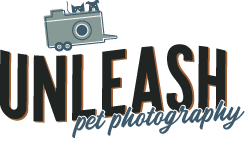RAW Feeding hosted by Beth Photography With Isabelle from NatuRaw Nutrition
/HAPPY NATIONAL RAW FEEDING WEEK
April 1st -7th is a week-long, virtual event for pet owners everywhere. Raw feeders around the world unite to share their stories & expertise.
Isabelle and I discussed the benefits of raw feeding and answered some common questions.
MEET OUR GUEST
NatuRaw Nutrition was founded in 2017 by Isabelle Belisle.
Isabelle has always had a passion for animals, and her certifications as a Small Animal Naturopath and Carnivore Nutritionist helps her act on that passion.
NatuRaw Nutrition believes that nutrition is the foundation of health and that each animal is an individual. She likes to focus on each animal’s dietary needs to ensure optimal health. Isabelle offers quality nutrition at an affordable price. Along with the products, NatuRaw Nutrition also offers consultations and seminars to help teach pet owners more about their animal’s individual needs. She focuses on educating pet owners to put the power back into their own hands.
Products are sourced from ethical local farms and butchers, to ensure freshness, quality, and peace of mind.
NatuRaw Nutrition believes that raw feeding should be easily accessible to everyone, helping your fur babies thrive.
You can contact Isabelle through her website by clicking this direct link: Naturaw Nutrition
TOP 5 RAW FEEDING QUESTIONS
1. I want to switch my dog and/or cat to raw. What should I feed them?
First, I like to ask clients if they have a pet with protein allergies. If they suspect allergies but are not sure of the cause, then I strongly suggest an allergy test from your vet.
If your pet has no known allergies, I like to start with chicken or turkey since its the easiest protein to digest. I would do either one of these proteins for 2 weeks and at the end of 2 weeks, I would introduce them to the next protein such as rabbit or pork. Usually they are on either of these proteins for 1 week. You know your dog or cat is doing well when they have small firm stools! Diarrhea may possibly occur for the first day or two but usually it will clear up on its own. So healthy stools are a good indication of adapting to the new diet. Our goal is to introduce a new protein gradually working up to redder meats. Once your pet is used to all proteins then you can alternate between these proteins at anytime. It is important to offer meat, bones, and organs.
2. How frequent should I feed them and how do I know they are getting enough food?
Ideally, if your pet has a healthy figure ( being able to see the last rib, and feeling them under the skin ( please review a chart), then you would feed 2% of their ideal body weight, 1.5% if they need to lose weight and 3-4% for a very active dog (farm dogs, sleigh dogs, etc). For puppies I calculate 2% of their expected adult body weight, sometimes a little more depending on their energy level. Senior dogs get 1-1.5% depending on activity level (senior depends on breed of dog/size). Healthy adult dogs should be fed 1 x a day. If your dog is medicated and needs food with medication, then this is an exception to feeding them 2 x a day.
3. Do I need to add supplements?
This is always in question. What’s great is that by feeding a variety of protein, you really are getting all of the nutrients that your dog needs. If you’re interested in the raw feeding nutrient chart, I’m more then happy to share this. A variety of protein is so crucial because different herbivores forage on different species of plants meaning their flesh holds different nutrients. Dogs and cats do not get the nutrients from eating veggies (this is simply not species appropriate). Instead, when the herbivore is foraging, their digestive system breaks down the nutrients from the plant matter, where it then gets absorbed into the blood, making it accessible to our carnivore pets through the flesh in a way that they can assimilate these nutrients. Our dogs and cats simply don’t have a long enough digestive system, nor the enzymes necessary to break down raw vegetables.
If there is worry of a nutrient gap because some breeds are simply pre-disposed to having an issue with assimilating certain nutrients, or if there is a particular issue with a dog, then I go to whole food supplementing using herbs. I stay as close to nature as possible, incorporating things they could naturally find in the wild. I simply don’t like using synthetic vitamins since there is the possible risk of over supplementing.
If you wish to give herbs to healthy pets, such as nutritive herbs like nettle or alfalfa, I think that is great as long as everything stays in moderation. No supplements or herbs should be used for a long period of time.
4. Can bacteria in raw meat make me or my pet sick?
When handling raw meat, common sense and proper sanitation techniques should be used. Ensure you wash your dog’s bowl using soap and hot water.
Personally, as for my pets and family, once the area is sanitized, I don’t worry. Dogs have an enzyme in their mouth called Lysozyme which kills most to all bacteria. They also have a very high acidity level in their stomach making it an inhospitable environment for bacteria.
Feeding your dog and cat a raw diet will actually protect them from contamination.
5. Aren’t bones dangerous?
Raw bones are safe and in fact, raw chicken bones crumble and break nicely. Only cooked bones are dangerous, since once they are cooked they become brittle and sharp. Never feed cooked bones to your pets.
Edible bones will depend on the size of the dog. A medium-sized dog can consume a whole chicken carcass with no issues.








